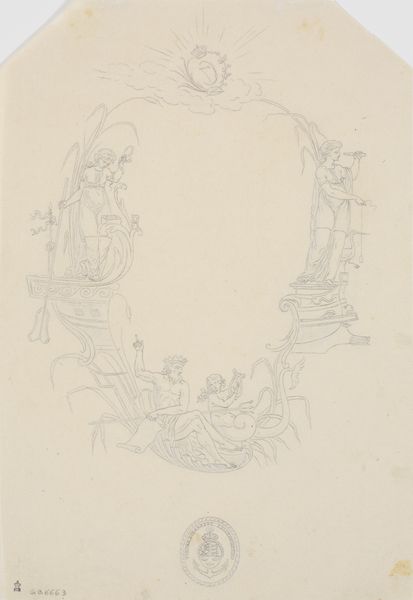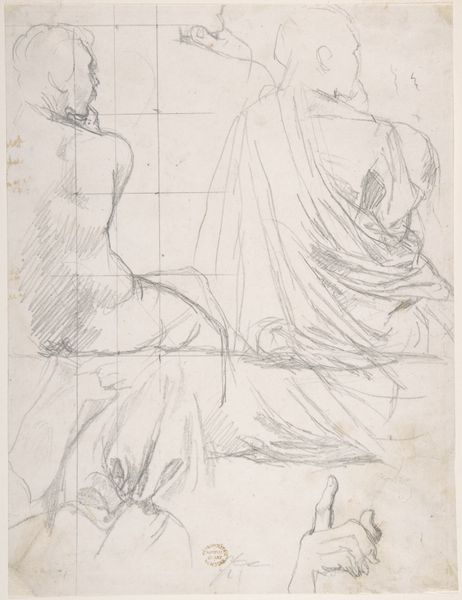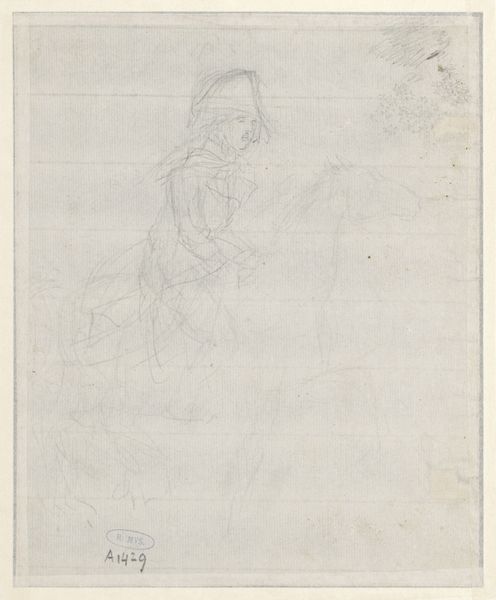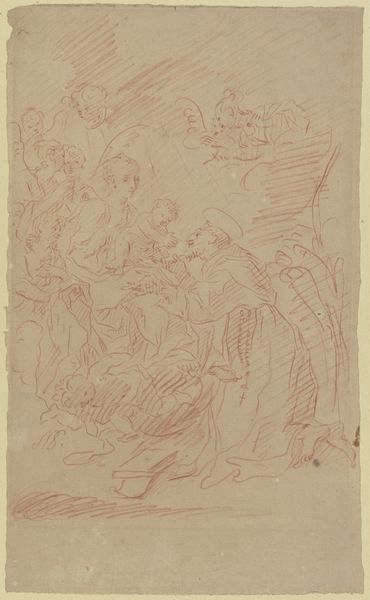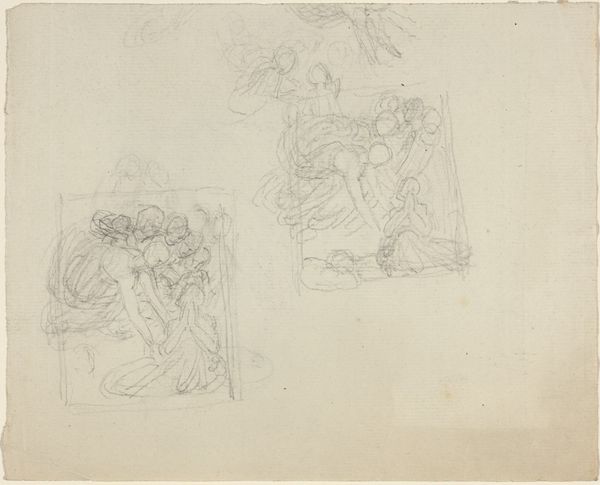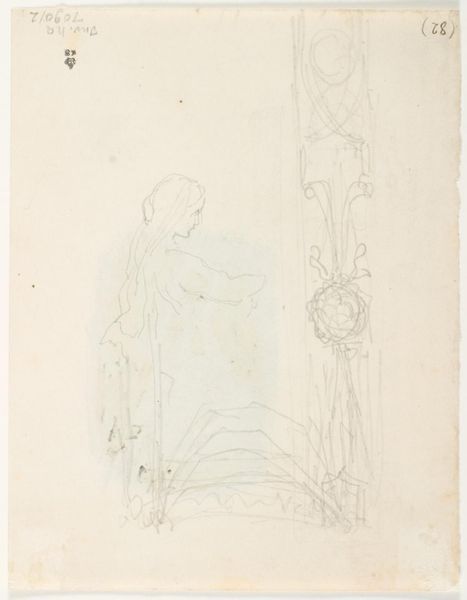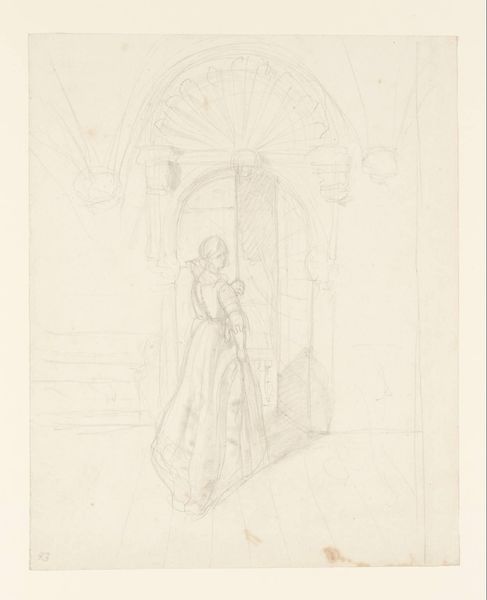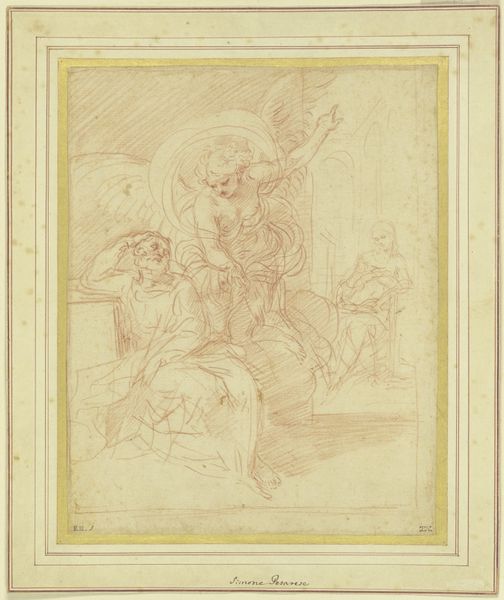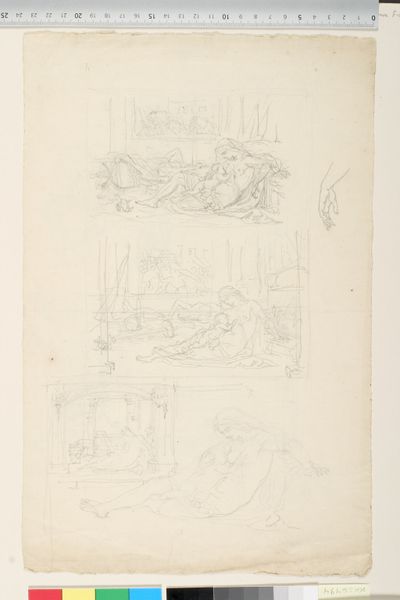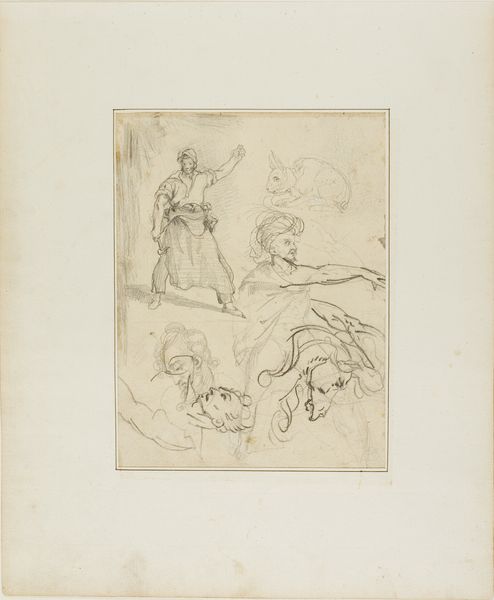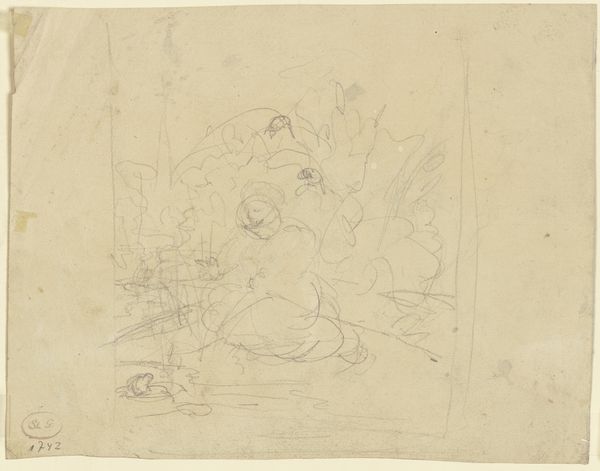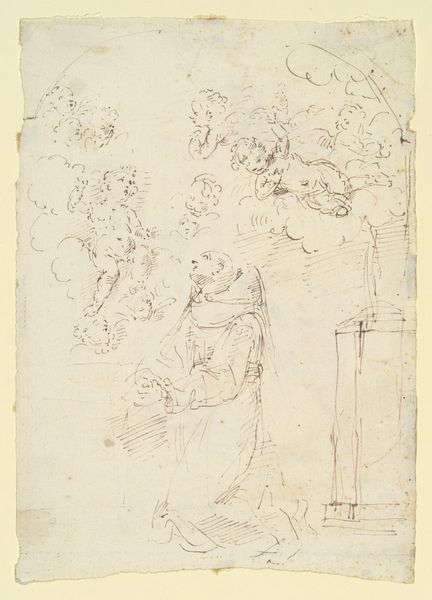
drawing, pencil, chalk, graphite
#
drawing
#
figuration
#
pencil
#
chalk
#
15_18th-century
#
graphite
#
history-painting
#
rococo
Copyright: Public Domain
Curator: Martin Johann Schmidt, an Austrian artist also known as Kremser-Schmidt, is believed to be the creator of "Der Heilige Antonius mit dem Kind" – that is, Saint Anthony with the Child. Editor: It strikes me as remarkably tender. The soft lines lend it a sense of intimacy. The figures almost seem to huddle together, seeking solace. Curator: The artist worked in the late Baroque period but displayed a clear Rococo aesthetic here. You can see that influence particularly in the lighter, graceful qualities of his drawing. This study utilises pencil, chalk, and graphite. You’ll notice that the figures are placed under an arch. Editor: How fascinating to see the scaffolding beneath a seemingly spontaneous piece. It suggests the work as not simply divine inspiration, but labor—calculated form in service of meaning-making, right? Was Schmidt positioning Saint Anthony in alignment or perhaps in tension with social expectations for Catholic leaders in his day? Curator: He was one of the most productive Austrian artists of the eighteenth century. His religious works, in particular, served as vehicles for promoting social order. Saint Anthony appears often as a symbol of that kind of desired stability. Editor: Even in this early form, a preparatory drawing as it is, we see the composition, the poses, and gestures contribute to that idea of serene governance and piety. Curator: Indeed. This piece offers a window into the working process of a sought-after artist as well as a wider picture of the public role art was expected to play at the time. Editor: I find it especially revealing. The loose sketch quality allows us, in a way, to access the artistic mind at work, which gives a deeper context into how these images functioned ideologically and culturally. Curator: Examining pieces like this can certainly shift our perceptions of the completed, polished work we might see displayed elsewhere. Editor: Precisely. This raw state lets us understand so much more. Thank you for shedding light on this preliminary stage, how that in-between space, offers critical insight into the making of meaning and power.
Comments
No comments
Be the first to comment and join the conversation on the ultimate creative platform.
